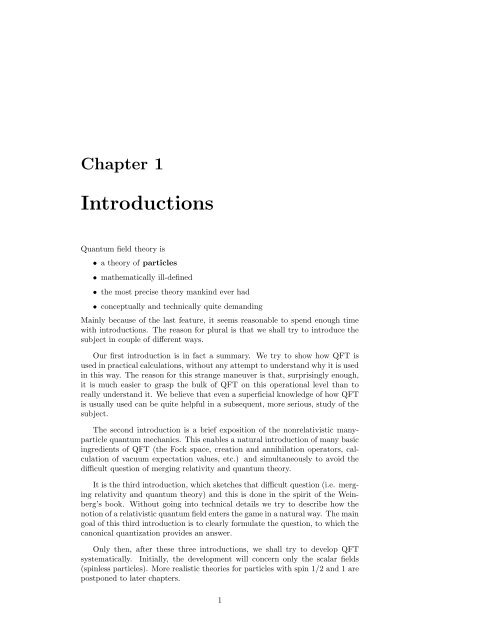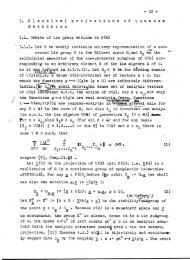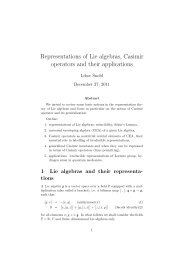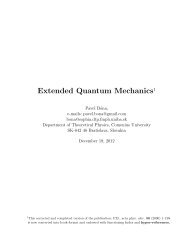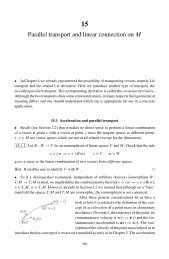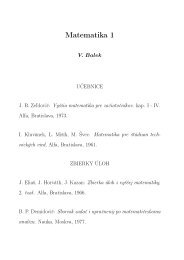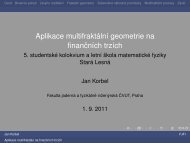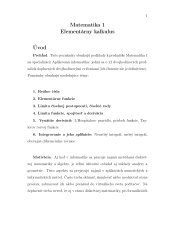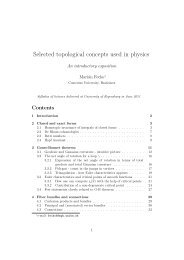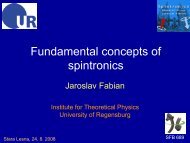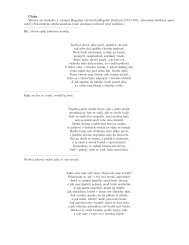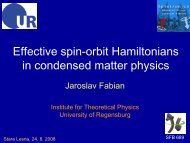Quantum Field Theory I
Quantum Field Theory I
Quantum Field Theory I
You also want an ePaper? Increase the reach of your titles
YUMPU automatically turns print PDFs into web optimized ePapers that Google loves.
Chapter 1<br />
Introductions<br />
<strong>Quantum</strong> field theory is<br />
• a theory of particles<br />
• mathematically ill-defined<br />
• the most precise theory mankind ever had<br />
• conceptually and technically quite demanding<br />
Mainly because of the last feature, it seems reasonable to spend enough time<br />
with introductions. The reason for plural is that we shall try to introduce the<br />
subject in couple of different ways.<br />
Our first introduction is in fact a summary. We try to show how QFT is<br />
used in practical calculations, without any attempt to understand why it is used<br />
in this way. The reason for this strange maneuver is that, surprisingly enough,<br />
it is much easier to grasp the bulk of QFT on this operational level than to<br />
really understand it. We believe that even a superficial knowledge of how QFT<br />
is usually used can be quite helpful in a subsequent, more serious, study of the<br />
subject.<br />
The second introduction is a brief exposition of the nonrelativistic manyparticle<br />
quantum mechanics. This enables a natural introduction of many basic<br />
ingredients of QFT (the Fock space, creation and annihilation operators, calculation<br />
of vacuum expectation values, etc.) and simultaneously to avoid the<br />
difficult question of merging relativity and quantum theory.<br />
It is the third introduction, which sketches that difficult question (i.e. merging<br />
relativity and quantum theory) and this is done in the spirit of the Weinberg’s<br />
book. Without going into technical details we try to describe how the<br />
notionofarelativisticquantumfieldentersthegamein anaturalway. Themain<br />
goal of this third introduction is to clearly formulate the question, to which the<br />
canonical quantization provides an answer.<br />
Only then, after these three introductions, we shall try to develop QFT<br />
systematically. Initially, the development will concern only the scalar fields<br />
(spinless particles). More realistic theories for particles with spin 1/2 and 1 are<br />
postponed to later chapters.<br />
1


